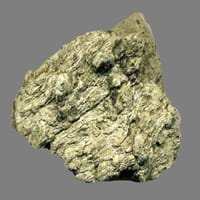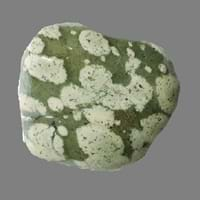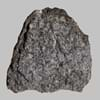Definition
Dacite is a volcanic igneous rock which is rintermediate in composition between andesite and rhyolite
Variolites are a group of dark green basic igneous rocks which exhibit pale colored spots, or spherules, especially on weathered surfaces, that give them a pockmarked appearance
Origin
Romania and Moldova, Europe
France
Discoverer
Unknown
Unknown
Etymology
From Dacia, a province of the Roman Empire which lay between the Danube River and Carpathian Mountains where the rock was first described
From Latin varius, speckled, variegated
Class
Igneous Rocks
Igneous Rocks
Sub-Class
Durable Rock, Soft Rock
Durable Rock, Hard Rock
Other Categories
Fine Grained Rock, Medium Grained Rock, Opaque Rock
Opaque Rock
Texture
Aphanitic to Porphyritic
Glassy, Massive, Porphyritic, Scoriaceous, Vesicular
Color
Bluish - Grey, Brown, Grey, Light to Dark Grey
Black, Brown, Light to Dark Grey
Durability
Durable
Durable
Appearance
Vesicular
Dull and Soft
Interior Uses
Decorative Aggregates, Entryways, Interior Decoration
Floor Tiles, Flooring, Homes, Hotels, Kitchens
Exterior Uses
As Building Stone, Paving Stone, Garden Decoration
Garden Decoration, Office Buildings
Other Architectural Uses
Curbing
Curbing
Construction Industry
As Dimension Stone, Construction Aggregate, for Road Aggregate, Landscaping
As Dimension Stone, Cobblestones, Rail Track Ballast, Roadstone
Medical Industry
Not Yet Used
Not Yet Used
Antiquity Uses
Artifacts
Artifacts, Monuments, Sculpture
Commercial Uses
Commemorative Tablets, Creating Artwork
Cemetery Markers, Creating Artwork
Types
Footwall Dacite, Hanging wall Dacite, Tuff and Biotite Dacite
Not Available
Features
Host Rock for Lead, Is one of the oldest rock
Has High structural resistance against erosion and climate, Very fine grained rock
Archaeological Significance
Monuments
Not Yet Used
Used
Famous Monuments
Not Applicable
Data Not Available
Sculpture
Not Yet Used
Used
Famous Sculptures
Not Applicable
Data Not Available
Figurines
Not Yet Used
Used
Formation
Dacitic magma is formed by the subduction of young oceanic crust under a thick felsic continental plate. Further, the Oceanic crust is hydrothermally altered as quartz and sodium are added.
Variolites are a group of dark green basic igneous rocks that exhibit pale colored spots on weathered surfaces that give them a pockmarked appearance.
Mineral Content
Amphibole, Apatite, Biotite, Feldspar, Garnet, Hornblade, Magnetite, Plagioclase, Pyroxene, Quartz, Zircon
Olivine, Plagioclase, Pyroxene
Compound Content
Ca, Fe, Potassium Oxide, Mg, Potassium, Silicon Dioxide
Aluminium Oxide, CaO, Iron(III) Oxide, FeO, Potassium Oxide, MgO, MnO, Sodium Oxide, Phosphorus Pentoxide, Silicon Dioxide, Titanium Dioxide
Types of Metamorphism
Burial Metamorphism, Cataclastic Metamorphism
Burial Metamorphism, Cataclastic Metamorphism, Contact Metamorphism, Hydrothermal Metamorphism, Impact Metamorphism, Regional Metamorphism
Types of Weathering
Biological Weathering, Chemical Weathering, Mechanical Weathering
Biological Weathering, Chemical Weathering, Mechanical Weathering
Types of Erosion
Chemical Erosion
Not Applicable
Grain Size
Medium to Fine Coarse Grained
Not Applicable
Fracture
Conchoidal
Conchoidal
Streak
White
White to Grey
Porosity
Less Porous
Less Porous
Luster
Subvitreous to Dull
Not Available
Compressive Strength
Not Available
Cleavage
Perfect
Not Available
Toughness
Not Available
2.3
Specific Gravity
2.86-2.87
2.8-3
Transparency
Translucent
Opaque
Density
2.77-2.771 g/cm3
2.9-3.1 g/cm3
Resistance
Heat Resistant, Impact Resistant, Pressure Resistant, Wear Resistant
Heat Resistant, Pressure Resistant, Wear Resistant
Deposits in Eastern Continents
Asia
Not Yet Found
India, Russia
Africa
Not Yet Found
South Africa
Europe
France, Greece, Romania, Scotland, Spain
Iceland
Others
Not Yet Found
Not Yet Found
Deposits in Western Continents
North America
USA
Canada, USA
South America
Argentina, Bolivia, Chile, Colombia, Ecuador, Peru, Venezuela
Brazil
Deposits in Oceania Continent
Australia
New Zealand, South Australia, Western Australia
Not Yet Found
Dacite vs Variolite Characteristics
Though some rocks look identical, they have certain characteristics which distinguish them from others. Characteristics of rocks include texture, appearance, color, fracture, streak, hardness etc. Dacite vs Variolite characteristics assist us to distinguish and recognize rocks. Also you can check about Properties of Dacite and Properties of Variolite. Learn more about Dacite vs Variolite in the next section. The interior uses of Dacite include Decorative aggregates, Entryways and Interior decoration whereas the interior uses of Variolite include Floor tiles, Flooring, Homes, Hotels and Kitchens. Due to some exceptional properties of Dacite and Variolite, they have various applications in construction industry. The uses of Dacite in construction industry include As dimension stone, Construction aggregate, For road aggregate, Landscaping and that of Variolite include As dimension stone, Cobblestones, Rail track ballast, Roadstone.
More about Dacite and Variolite
Here you can know more about Dacite and Variolite. The life cycle of a rock consists of formation of rock, composition of rock and transformation of rock. The composition of Dacite and Variolite consists of mineral content and compound content. The mineral content of Dacite includes Amphibole, Apatite, Biotite, Feldspar, Garnet, Hornblade, Magnetite, Plagioclase, Pyroxene, Quartz, Zircon and mineral content of Variolite includes Olivine, Plagioclase, Pyroxene. You can also check out the list of all Igneous Rocks. When we have to compare Dacite vs Variolite, the texture, color and appearance plays an important role in determining the type of rock. Dacite is available in bluish - grey, brown, grey, light to dark grey colors whereas, Variolite is available in black, brown, light to dark grey colors. Appearance of Dacite is Vesicular and that of Variolite is Dull and Soft. Properties of rock is another aspect for Dacite vs Variolite. The hardness of Dacite is 2-2.25 and that of Variolite is 6. The types of Dacite are Footwall Dacite, Hanging wall Dacite, Tuff and Biotite Dacite whereas types of Variolite are Not Available. Streak of rock is the color of powder produced when it is dragged across an unweathered surface. The streak of Dacite is white while that of Variolite is white to grey. The specific heat capacity of Dacite is 0.92 kJ/Kg K and that of Variolite is 0.84 kJ/Kg K. Depending on the properties like hardness, toughness, specific heat capacity, porosity etc., rocks are resistant to heat, wear, impact, etc.Dacite is heat resistant, impact resistant, pressure resistant, wear resistant whereas Variolite is heat resistant, pressure resistant, wear resistant.





